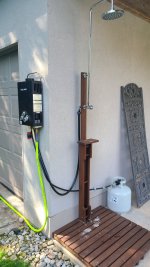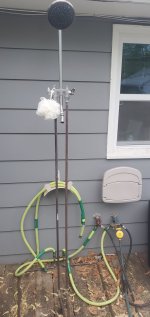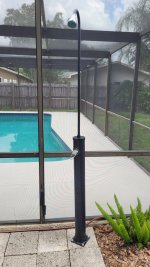I put up a shower head that simply connects to a hose bibb for rinsing off after a pool swim, and it is fantastic... but cold! Are there any very simple ways to DIY some basic hose lines for outdoor showers?
I came across camping units that use a propane tank, but they weren't clear how long the tank actually lasts, and I saw small tankless water heaters but those appear to need electricians and or plumbers to connect to gas lines (doesn't seem DIY), and then on Amazon I have seen "solar powered" bascally stick showers but they looked super gimmicky and only hold 2 or 3 gallons of water.
Obviously being right next to the hose I have access to standard 15A outlets and a hose bibb.... and I've been looking for a while and can't help but think other folks have come up with something DIY friendly. Thank you.
I came across camping units that use a propane tank, but they weren't clear how long the tank actually lasts, and I saw small tankless water heaters but those appear to need electricians and or plumbers to connect to gas lines (doesn't seem DIY), and then on Amazon I have seen "solar powered" bascally stick showers but they looked super gimmicky and only hold 2 or 3 gallons of water.
Obviously being right next to the hose I have access to standard 15A outlets and a hose bibb.... and I've been looking for a while and can't help but think other folks have come up with something DIY friendly. Thank you.




